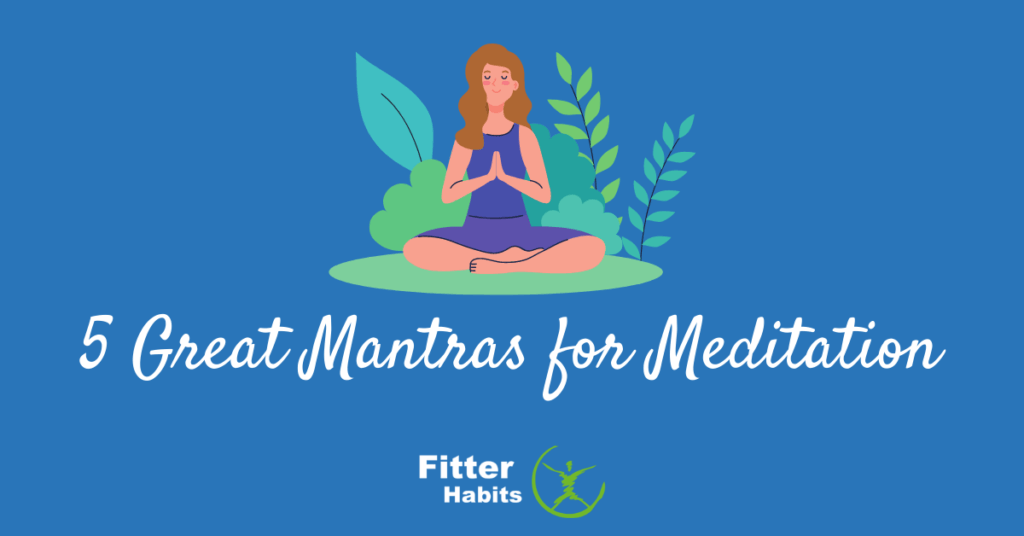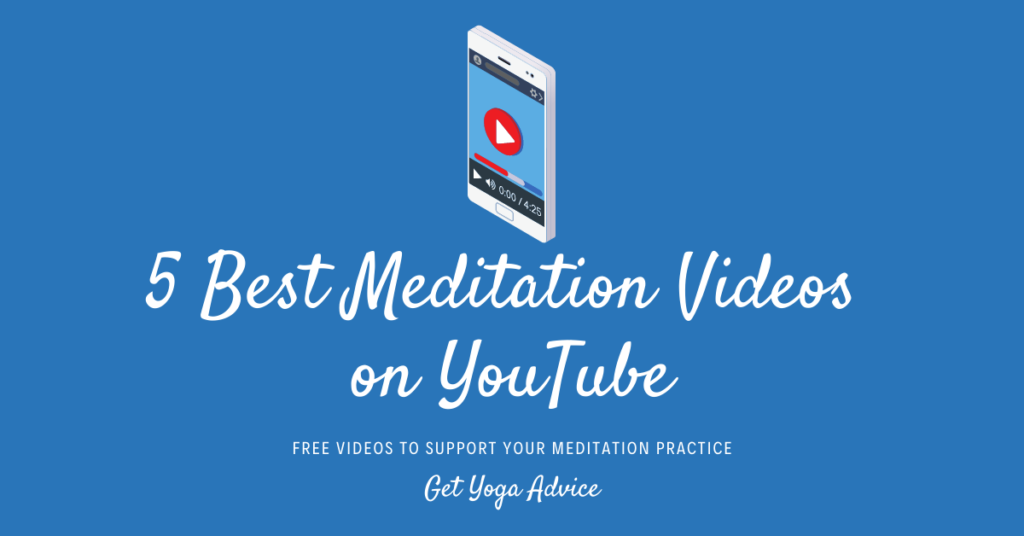Our thoughts shape our reality and make our days more enjoyable. Here are five great mantras for meditation to help you feel more optimistic.
George Harrison, the lead guitarist for the Beatles, transformed the band’s music when he met and received a mantra from Maharishi Mahesh Yogi in 1967. John Lennon even integrated the mantra “Jai Guru Deva Om,” Sanskrit for “Thanks to Guru Deva” (the Maharishi’s teacher), in the chorus of the song “Across the Universe.”
Mantras changed the Beatles, stimulating personal and creative growth, just like mantras have changed the lives of millions of other yogis throughout history.
While some people, like Harrison, have a teacher or spiritual guru to give them a mantra, there is nothing wrong with choosing a mantra for yourself. In fact, you don’t have to limit yourself to one. You can choose a new mantra whenever you need one to suit your purpose at the time.
You may find that one mantra works best when your thoughts are happy, while other phrases work better when you are struggling with less positive feelings. This article will help you choose and use a mantra to help you reach a more elevated consciousness.
Contents
What Is A Mantra Meditation?

A mantra is a word or sound that you repeat (either out loud or silently, in your mind) to help you achieve a deeper meditative state. Mantras can be words in any language, often English or Sanskrit, or can be non-word sounds like “om.”
When you chant a mantra, it helps you focus on the present. A meditation mantra occupies your mental space in a way that can help stop intrusive thoughts from sneaking in. A mantra is a tool, not a prize. As Harrison explained,
“…the whole idea is to transcend to the subtlest level of thought. And the mantra becomes more subtle and more subtle until finally you transcend even the mantra. Then you find yourself at this level of pure consciousness.”
You can do mantra meditation any time of day, and you can chant a mantra as few or as many times as you want. One traditional practice is to chant a mantra 108 times, based on observations about the universe by Vedic mathematicians in ancient India.
You vocalize a spoken meditation mantra as the exhalation component of slow, diaphragmatic breathing. It is this deepening of breathing in combination with chanting, rather than the mantra alone, that enables a deeper meditative state.
You might also be interested in our evening yoga guide. Check out these yoga meditation room ideas to ensure you start off on the right foot.
How Do I breathe While chanting A mantra?
Breathing correctly is the most important step in using mantras to meditate. Suppose you’ve never tried diaphragmatic breathing before. In that case, you might find it useful to watch an instructional video online (such as this one or this one), or just follow these simple instructions.
First, get into a comfortable position, such as lying on your back, and close your eyes. Relax your body, especially the muscles in your torso, from the pelvis to the neck. Place your right hand over your heart, and your left hand over your belly.
Experiment with taking deep breaths. First try breathing just into your upper lungs. As your chest lifts your right hand towards the sky keep your belly sucked in. Exhale. That is shallow breathing, normal for stressed out people, and exactly what you want to avoid.
On the next breath, as you inhale try to breathe into your lower abdomen, so that your left hand lifts skyward. Slowly fill your lungs as fully as possible. Then exhale slowly, pushing all of the air out of both the lower and upper lung areas. Then repeat.
The rise and fall of your belly indicates that you are using your diaphragm. It’s a muscle at the bottom of your lungs that expands into your abdominal cavity to create more space for your inhalation. Diaphragmatic breathing is a technique that helps you relax and heal, an essential part of any meditation practice and a healthy life in general.
Once you have the hang of diaphragmatic breathing, you are ready to try adding a mantra. Simply, inhale deeply, expanding both your upper and lower lungs, and then release the air slowly as you vocalize your mantra.
Is “Om” A Mantra?
Om is the simplest and most pervasive of meditation mantras, a tradition common to Hinduism, Buddhism, Jainism, Sikhism, and even among nonreligious western practitioners of yoga. Om is considered a “cosmic sound,” “mystical syllable,” or “primordial vibration,” It is considered to be the most fundamental human vocalization, and represents the sound of the universe itself.
The meaning of om is complicated, but it can be understood to represent existence as a whole, or divinity.
How Do I Use Om in Meditation?
The sound om is often spelled “aum.” It can be broken down into three component sounds ah-ou-mm. Based on the Sanskrit language, it is correct to merge the syllables and pronounce it “om” rather than distinguishing the three parts of the sound.
The change in sound comes not from a deliberate change in vocalization, but from the way the shape of your mouth changes as you open and close it over the course of your exhalation. The vibration of this sound has a powerful calming effect.
In addition to being chanted alone, in the practice known as Praṇava, om can also be a part of a longer mantra, such as Lennon’s mantra “Jai Guru Deva Om.”
You can spend a lifetime studying a concept like om, but it isn’t necessary. There are many resources available online if you are interested in a deep dive into the meaning and benefits of om, but you don’t have to study om to use om. Simply inhale deeply, using your diaphragm, and then slowly om as you exhale.
You might find our round-up of the best meditation videos on YouTube helpful.
How Can I Get Comfortable Chanting Om?
Especially when you first begin a mantra practice, you may find repeating your mantra awkward. Many people find it useful, during a meditation session, to play a recording of om being chanted repeatedly.
The recording can help you focus and keep chanting at a consistent pace. Some have musical elements that contribute to a spiritual feeling.
You can find long recordings of om chanted at a variety of different paces — such as 417 hz and 528 hz — so experiment.
It may help you listen to othersas you learn to om, especiallywhen you find a cycle speed that fits your breathing. The vibration from playing the recording can also help you feel more calm and positive.
What Are Some Other Powerful Mantras?
Om Shanti Om
A rough translation of Shanti is “peace.” Om shanti might be considered a rough equivalent of the prayer “Peace be with you.”
Because of its popularity, the chant om shanti is available as a recording to help you with your mantra meditation. Often the word shanti is repeated three times (om shanti shanti shanti om), as in this recording.
Om Mani Padme Hum
The mantra Om mani padme hum is particularly popular among Buddhist practitioners of meditation. It is a mantra designed to inspire contemplation about the power of meditation to help you reach a more divine state of being.
As the Dalai Lama explained,
“Thus the six syllables, om mani padme hum, mean that in dependence on the practice of a path which is an indivisible union of method and wisdom, you can transform your impure body, speech, and mind into the pure exalted body, speech, and mind of a Buddha.”
Extended recordings of chanting om mani padme hum are available.
I Am Here Now
For some people a Sanskrit mantra is the most effective. Like the Latin mass for Catholics, using an unfamiliar language can help yogis lose themselves in the sound instead of being distracted by thoughts about the meaning.
However, for other people, mantras repeated in English can allow the consciousness to focus on a particular intention as they meditate.
If you fall into the second category, “I am here now” is a great little mantra to try. It has multiple meanings and benefits. Its focus on the here and now reminds us to engage in mindfulness. Also, it is a good response to the inner critic, who points out our inadequacies.
Chanting I am here now, as a response to the inner critic, reflects that what matters most is your effort in the present moment, not any past or future failures.
I am here now is a mantra ideally suited to silent meditation. Simply repeat the words “I am” in your mind as you inhale, and then “here now” as you exhale.
I Am _____ [Fill in the Blank]
This mantra can be altered to replace the last word with anything that represents your goal state of mind. For example, you could say “I am grateful,” “I am happy,” “I am strong,” or “I love my life.”
These types of mantras for meditation can help you be more aware and accepting of the assets you already have. For example you could use “I am loved” if you are a person who feels depressed and lonely, despite knowing rationally that your friends and family do love you.
When you feel weak and afraid, chanting “I am strong,” makes you stronger by embracing that quality as it already exists as part of your self, deep down.
Many people struggle with using affirmations in daily life, even knowing their great healing potential. Through positive reinforcement, repeating these phrases can help change your mind and your life for the better.
Create Your Own Mantra, As Weird As You Want
My most effective mantra has always been an odd one I created myself: In Crow I Only Think of Crow. One day, after an argument with a friend I love, I was practicing yoga, hoping to relax and feel less resentment toward my friend. I kept trying to get into the crow position, bakasana, but whenever I would get close to being balanced correctly I would think about my friend, feel angry, and fall on my face.
To try to stop being distracted by anger, I started repeating in my mind “In crow I only think of crow,” and eventually it worked, I focused on crow, and found my balance.
On another occasion, I was agitated about a medical problem and decided to go for a walk. I couldn’t calm down, and tried repeating “In crow I only think of crow,” but even that couldn’t crowd out my fearful thoughts, so I tried something new.
Instead of repeating that exact mantra over and over again, I started changing the mantra each time I said it, using a different bird every time, in alphabetical order. “In albatross I only think of albatross. In bluebird I only think of bluebird. In crane I only think of crane….”
Adding this element of mental stimulation was the trick I needed to finally stop worrying about my medical diagnosis and feel more at peace with my life. After chanting the mantra this way for about twenty minutes, I finally transitioned into a silent walking meditation free from intrusive feelings and thoughts.
You, too, can create your own unique mantra that suits your precise needs. It could be a song lyric, a prayer, or just a phrase that resonates or makes you feel happy. Identify a goal state of mind, and brainstorm a phrase to help you reach that state of mind. Your meditation mantras should be concise, positive, powerful, and have a rhythm and sound that flows effortlessly off your tongue.
The Final Word on Mantra Meditations
Silent meditation is wonderful, but sometimes a mantra meditation promotes relaxation, diaphragmatic breathing, attitudinal shift, and a deeper level of consciousness.
Whether you use om, an ancient Sanskrit mantra, your favorite song lyric, or a phrase you create yourself, a mantra is powerful tool in your meditation toolbox.
Om shanti!
f you’re sick of meditation, you might enjoy these alternatives to meditation.



